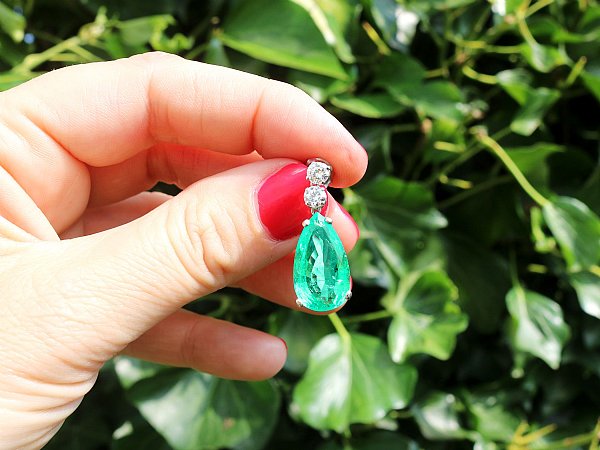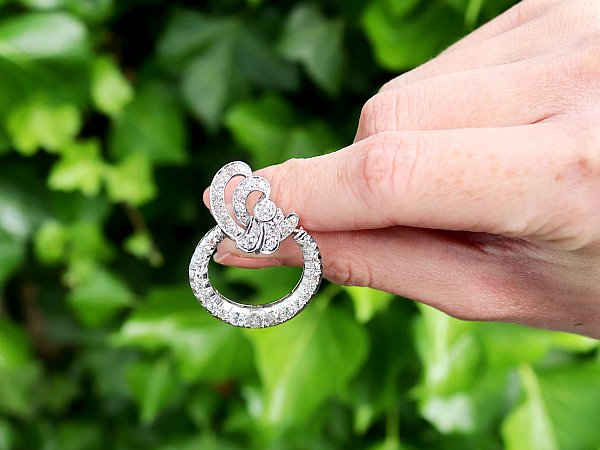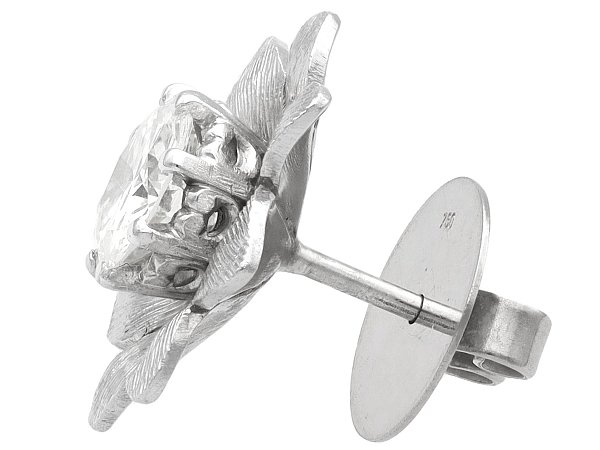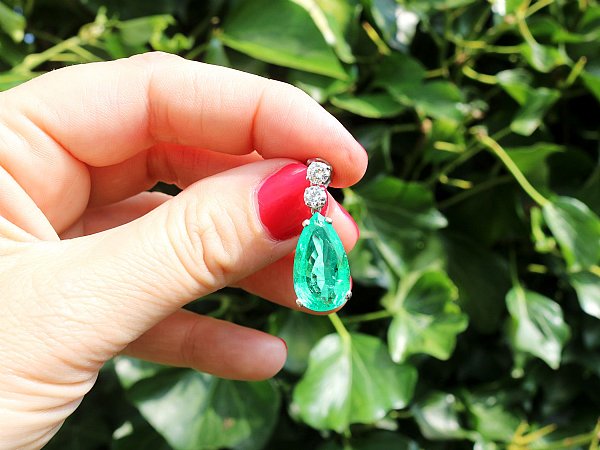The History of Earrings
The history of earrings stretches back to a variety of ancient civilizations. Ear piercings are one of the oldest recorded examples of body modification that exists. Throughout history, earrings have been worn by men and women of a variety of social classes, across a number of different civilizations.
Ancient Civilizations
Materials such as gold, carnelian, and lapis lazuli are commonly found in Sumerian examples of earrings that date to 2600 BCE, although it is entirely possible that there are even older examples that have been lost to time. The Minoan civilization, located on the island of Crete from roughly 3000 – 1100 BCE, featured earrings crafted from metals such as gold, silver, and bronze. The Aegean civilization of Bronze Age Greece shows that hooped earrings were fashionable items, worn by many as statements of style. It can be said with confidence that men definitely wore earrings, as evidenced through frescoes depicting such things and other archaeological findings dating to Ancient Persia.
Tutankhamun’s tomb, discovered in 1922, showed that while the ancient king wasn’t wearing earrings, his earlobes were perforated. His tomb did feature earrings, making it highly probable that he did wear earrings at some point in his life. Further examination of his tomb found that the ear sections of burial masks were perforated, with gold discs covering the holes. Howard Carter, the archaeologist responsible for the discovery, believes that the implication of this is that earrings were worn by children in Ancient Egypt rather than adults. This is reflected by the fact that, until recently, it was still commonplace for earrings to only be worn by children in Egypt.
Biblical sources such as Exodus confirm that earrings were worn in ancient civilizations, with passages making reference to earrings belonging to children. In Greece and Rome, by the classical period, earrings were predominantly worn by women. Men wearing earrings was considered be an oriental practice, as many Ainu men and women in Japan wore earrings as a part of their cultural tradition, although the practice of men wearing earrings was outlawed in the 19th century in Japan.

The History of Earrings in England
Earrings became the fashion for gentlemen and ladies in England during the late 1500s, a time period considered to be the English Renaissance. Ear piercings also held symbolism for those that were sailors by profession; to them, a pierced lobe symbolised that they had traversed the world or potentially crossed the equator at some point in their journeys.
Sometime after this period, earrings once more became only a feature of a woman’s jewellery box. Women of a certain social standing wore earrings every day, while it was not fashionable or dignified for men to wear them. The popularity of earrings for men did rise again, however, in the 1900s. Ear piercing once more held hidden meaning in the 1960s, as a pierced right lobe was a coded symbol of a man’s homosexuality. Western Europe was not a safe place to be an openly gay person in the 1960s, and so coded clothing and jewellery was common. Today, earrings are widely worn by men and women, particularly among the youth.
By the mid-1980s, the ‘punk’ subculture had adopted ear piercings as a symbol of rebellion, and every section of the ear was commonly pierced, rather than the traditional lobe. A furthering of this counter-culture occurred in the late-90s/early-00s as it became popular for young people to stretch their earlobes through the hole from a lobe piercing.
Today, a pierced lobe is still the most common type of ear piercing. A variety of studs, hanging earrings, and clip-on earrings for those who do not have piercings are the most common and popular types of earrings bought and worn.
What do Earrings Symbolise?
Some versions of what earrings symbolise have already been covered, however there are more avenues to explore. In early Christian civilization, earrings as a concept conflicted with Christian faith, as it was considered sinful to alter one’s body away from the original design of God’s creation. Similarly, in the Buddhist faith, depictions of the Buddha often feature elongated earlobes without any jewellery, suggesting that the Buddha used to wear heavy earrings, and then gave them up when he abandoned a materialistic life to become a monk and dedicate himself to his faith. Alternatively, Ancient Romans used to use engraved golden earrings as an identifier of their preferred political leanings, similarly to how people might wear pin badges or have stickers on their cars or windows today. Heavy earrings, typically made of gold that is either plain or engraved, have been used throughout ancient civilizations as a symbol of financial status and power. Today, earrings are not used to associate oneself with any specific group, although many people do choose to wear earrings that reflect their interests and affiliations, such as rainbow-themed earrings to show one’s support for the LGBT+ movement.
The Purpose of Earrings
It is easy to think that earrings have no purpose, and in truth they do not serve any specific purpose besides decoration. In Ancient Persia – one of if not the earliest civilization recorded to have worn earrings – soldiers wore earrings believing them to be talismans that could offer protection in battle. Along this same line of reasoning, other ancient cultures like Rome and Greece wore earrings with the belief that the metal would repel demonic entities, the widespread belief being that demons could possess people’s brains by entering through their ears. Sailors across a vast variety of cultures wore earrings made of gold, both as a protective force and as a form of deposit. In the case that any soldier might die at sea and wash up on shore, their gold earrings were to be used to cover the cost of a funeral. Some earrings even featured engravings detailing the hometowns of the soldiers, with the intent being that their bodies be returned home to be buried. Such measures are not needed in modern society, and instead earrings are largely decorative, although some piercings in specific regions of the ear are linked to a significant decrease in chronic headaches and nausea.
The History of Hoop Earrings
When discussing the usage of earrings by early civilizations, almost all examples discovered have been hoop earrings of varying sizes. While studs are generally more common, it was hoops that were used first. Sailors and rulers alike wore hoop earrings, and beyond that even up to the 18th century people of great means have been depicted wearing hoop earrings.
Across the 20th century, women of colour popularised hoop earrings in a big way. From Josephine Baker in the early 20th century to the likes of Jennifer Lopez and Selena Quintanilla in the 1990s, women of colour wore large hoops – usually made of gold – and from this style, large hoops have been popular among a range of women throughout the 20th and 21st centuries.
The History of Stud Earrings
Stud earrings came into fashion relatively recently. From the Victorian era until roughly the 1950s, ear piercings had fallen out of fashion, and piercings themselves were viewed as uncouth, something for sailors and lower classes. In popular culture, the film Grease explores the early 1950s attitude to ear piercings, as the virtuous Sandra Dee has her ears pierced by her rebellious, ‘bad-girl’ friends at a sleep over. However, in the place of stud earrings, clip-on earrings were immensely popular. A plethora of examples of antique and vintage earrings are clip-on earrings for this reason. In more recent years, around the mid-20th century, earlobe piercings once again became popular, and piercing parties became commonplace among young girls.
Piercings and other body modifications have always been a part of human culture, from the frozen remains of a 5,000 human in Italy, whose lobes were pierced, to the youth of today whose ears are frequently littered with an assortment of earrings. Ear piercings in particular have been and continue to be the most common and widespread of all piercings.





